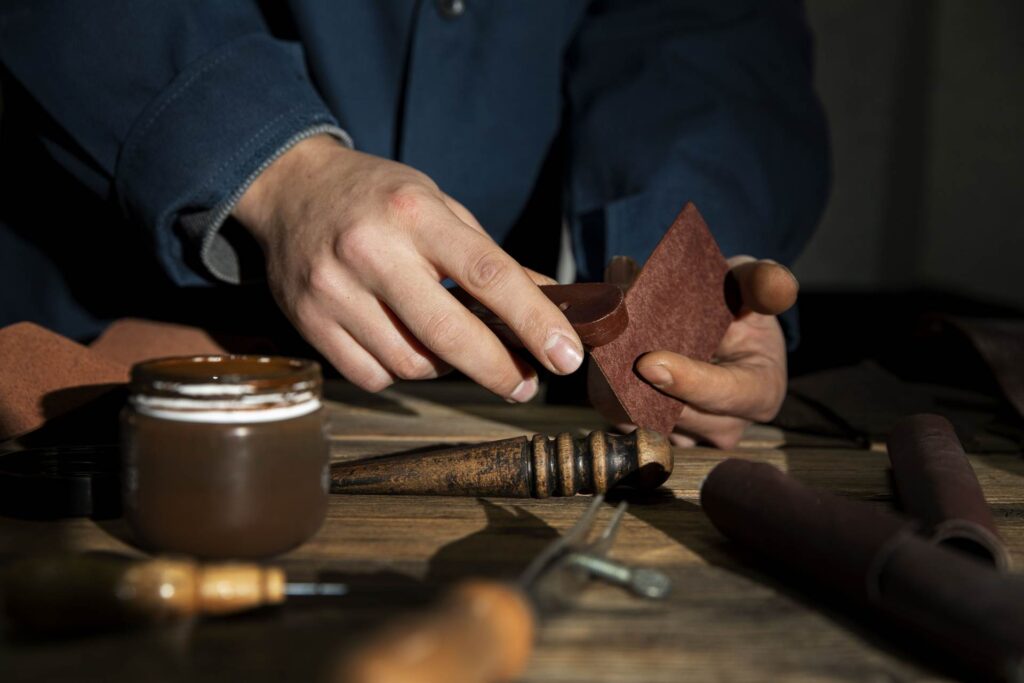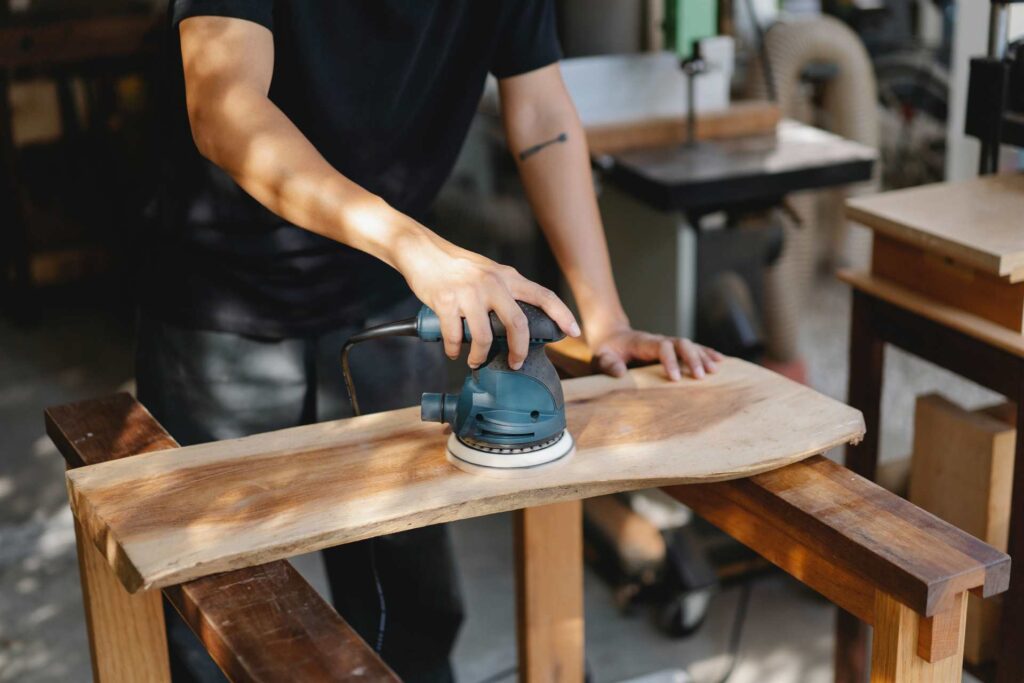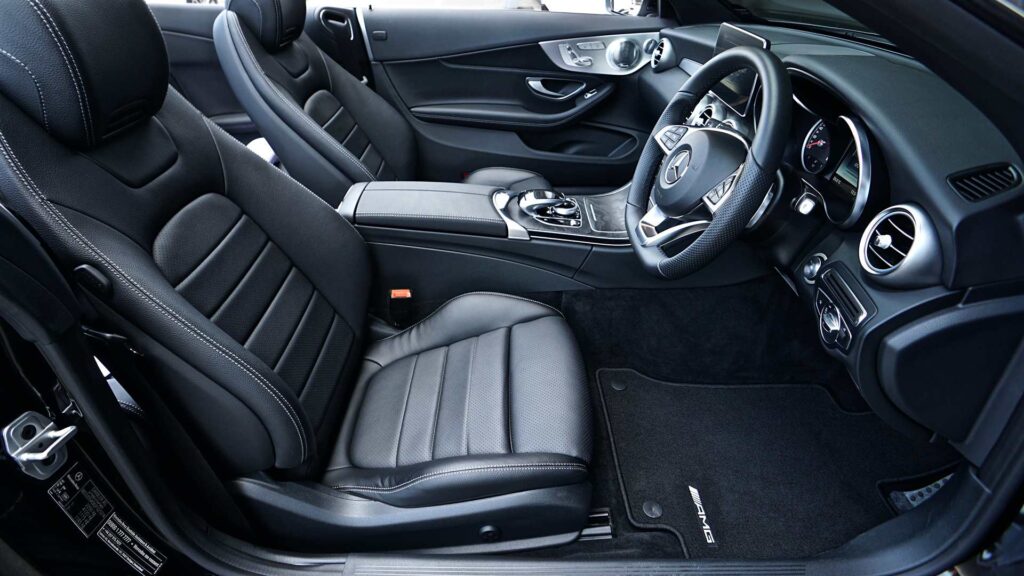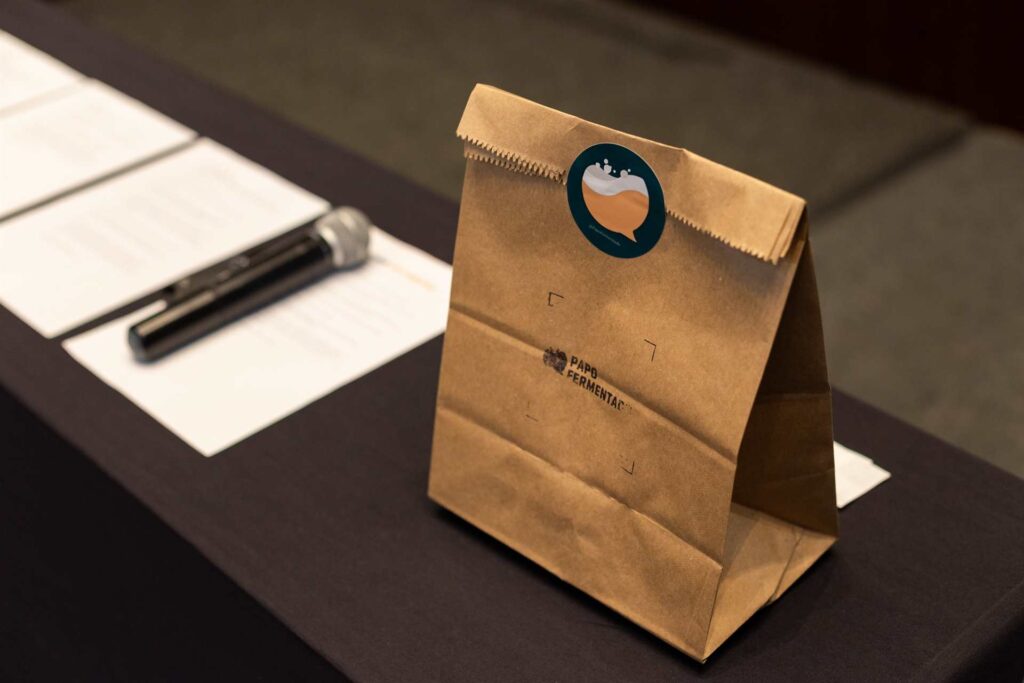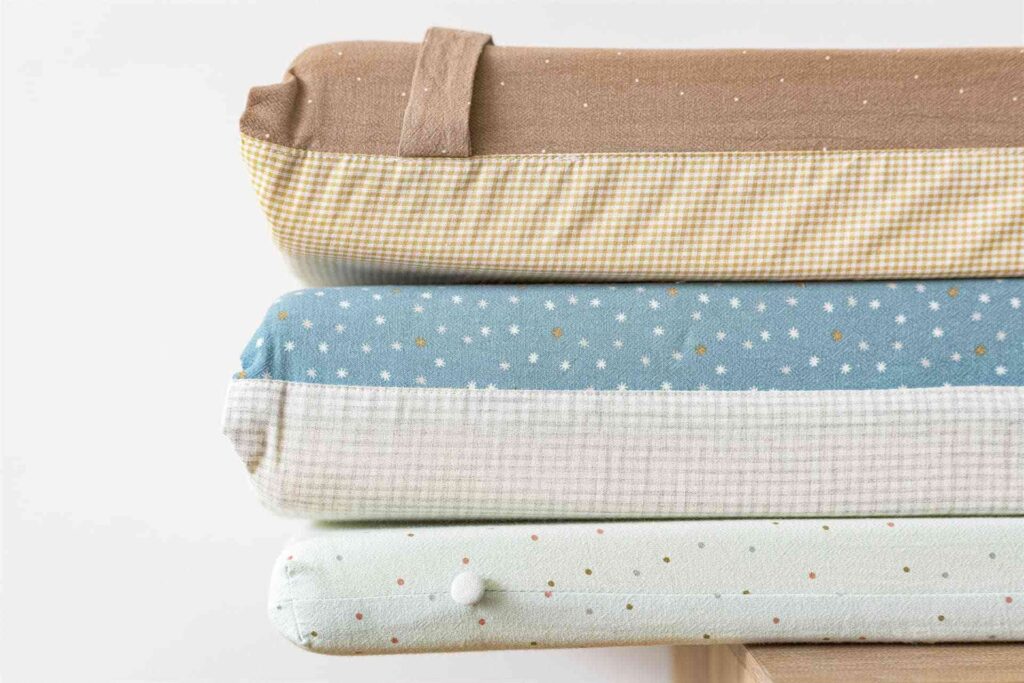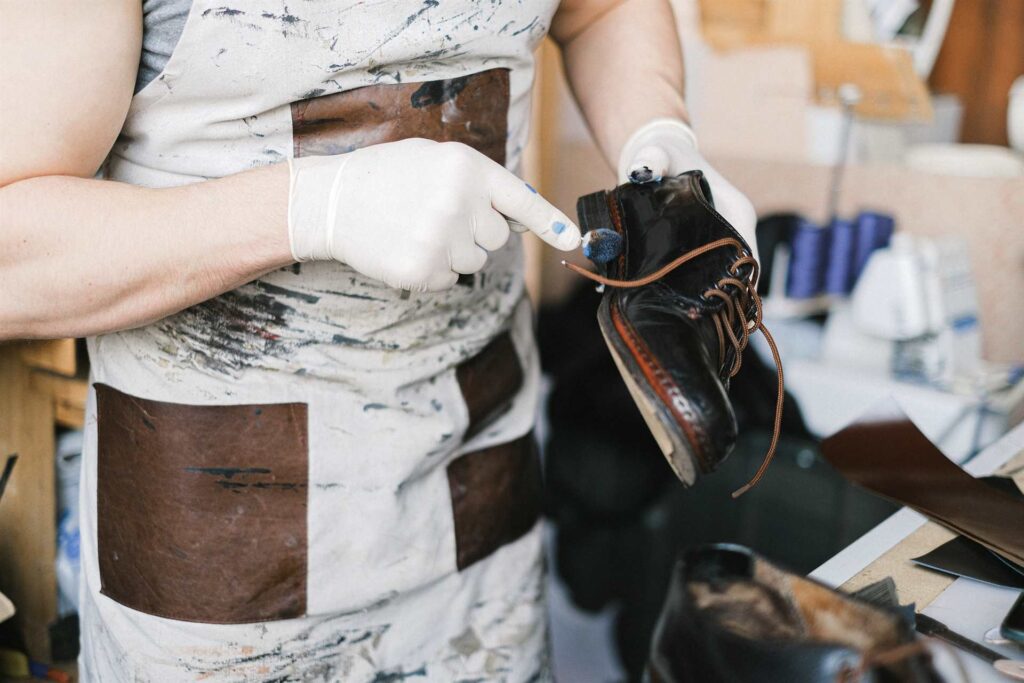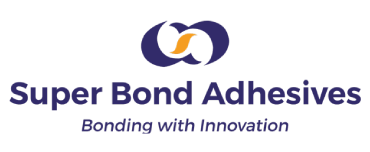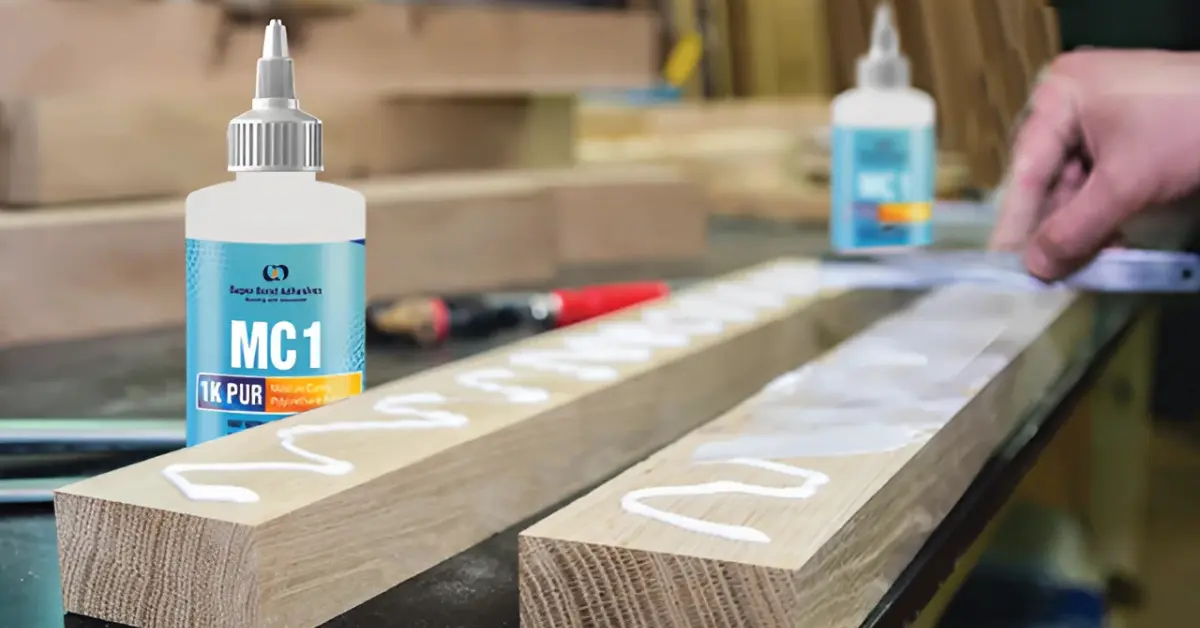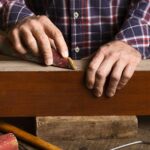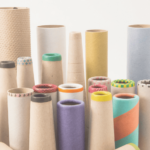In the fast-paced landscape of industrial manufacturing, the search for stronger, lighter, and more reliable materials has pushed the adhesive industry towards innovation. Among the most transformative technologies in this sector is the 1K PUR or one-component polyurethane adhesives. High-performance bonding with a balance of strength, flexibility, and durability. Furthermore, industries such as furniture, construction, packaging, footwear, and automotive assembly actively use 1K PUR adhesive for its versatile performance.
This blog covers everything you need to know about 1K PUR adhesives, i.e., what defines them, how they function, where industries apply them, and how they’re transforming the adhesive landscape.

What is 1K PUR?
1K PUR (One-Component Polyurethane Adhesive) is a ready-to-use adhesive known for its D4 Grade performance, which is a grading standard for waterproof and high-strength adhesives. Ambient moisture activates the curing process. Unlike conventional two-component adhesives, in which components have to be mixed before application, 1K PUR can be applied straight from the container without any preparation, which helps in saving both time and resources, and strength is also not compromised.
Characteristics and benefits
- Waterproof & Weather Resistant: Capable of standing against any weather and moisture, or harsh conditions.
- Setting time: 15 to 20 minutes
- Single Component: It requires no mixing. It is ready to apply.
- Versatile: It bonds well with many materials such as wood, metal, concrete, plastic, rubber, foam, mineral substrates, etc.
- Fast and Strong: It sets fast and also provides bonds of very high strength that resist mechanical stresses and vibrations.
- Gap-Filling: It fills in small spaces or irregularities between the surfaces.
- Usage: It is good for both indoor and outdoor use.
- Resistant: It is resistant to heat, water, oil, grease, molds, and chemical attacks, which means it is very durable.
- Fire-Rated Options: Available for both standard and fire-rated applications
What constitutes PUR?
Polyurethane (PUR), a chemical substance, forms the base of 1K PUR adhesive. Its built-in characteristics make it ideal for adhesive use and enhance properties such as:
- High load-bearing capacity
- Flexibility across a range of hardness
- Abrasion, cut & tear resistance
- Waterproof & oil/grease resistance
- Electrical insulation
- Fast production & cost efficiency
- Mould, mildew & fungus resistance
- Reliable bonding in harsh conditions
Working and Mechanism
The 1K PUR adhesive reacts chemically with moisture present in the air or within the material it bonds to, forming hard and strong bonds in the process. It is good for bonding wood, metal, composite panels, plastics, foams, etc., so it is a versatile solution for many industries.
How exactly does it work? Let us look into it step-wise.
- Contains Reactive Prepolymer
In each droplet of 1K PUR, a prepolymer is present. Think of prepolymers somewhat like semi-built Lego sets; they remain partially assembled and actively wait to lock in with new pieces. Isocyanate (-NCO) groups are sitting in these prepolymers, ready to react. Isocyanates are the “hooks” that want to grab onto something, specifically, moisture. - Cures by Reacting with Moisture
– When you apply 1K PUR to a surface like wood or foam, moisture from the air or the material itself comes into contact with the adhesive.
– Now those reactive ends are on the chase for water (H₂O.). On encountering it, a chemical reaction occurs: isocyanate reacts with water, yielding urea bonds and carbon dioxide gas.
– The urea bond is very strong, which is what helps glue things permanently.
– The carbon dioxide creates tiny bubbles, but the glue’s formulation controls them to prevent any disruption to the bond.
- Forms a Crosslinked Polymer Network
As the reaction continues, more and more of those “semi-built Lego” prepolymers connect and form a solid, tight-knit network. The adhesive cures when it hardens from a liquid into a tough, elastic, rubbery solid that permanently joins the materials together.
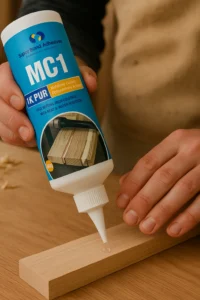
Why Is It So Strong?
- Chemical Bonding: In contrast to a normal glue that adheres by drying, the single-component PUR actually forms a chemical bond to the surface, especially if such a surface is porous: wood, fabric, or foam.
- Penetration: It gently soaks into cracks and holes in the surface and hardens therein, hence the grip is deep.
- Flexible Strength: Even when cured, 1K PUR stays slightly flexible. This means it can handle expansion, vibration, and stress without cracking, which makes it ideal for construction, footwear, or furniture.
But won’t the moisture damage the adhesive?
Actually, moisture is what triggers the glue to work. But there’s a balance, too much moisture, like applying it on a soaking wet surface, can make it foam too much and weaken the bond. That’s why surfaces should be clean, dry to the touch, but still contain natural humidity (like in wood or air).
Applications of 1k PUR
- Woodworking and Furniture
In cabinetry, panel lamination, edge banding, and furniture assembly, 1K PUR adhesives provide structural strength while allowing natural expansion and contraction of wood. - Construction
While building, flooring systems, insulated panels, sandwich panels, and door assemblies benefit from this. - Automotive
Automotive PUR adhesives now handle an immense variety of applications, ranging from headliner attachment and dashboard mounting to secondary insulation installation and seating setups. They offer lightweight and sound-dampening benefits, which are essential for modern vehicle design. - Footwear
1K PUR adhesives are vital in the footwear industry for the bonding of soles to uppers in situations that call for flexibility, strength, and moisture resistance. - Packaging
In specialty packaging, especially for food or electronics, the moisture and chemical resistance properties of 1K PUR are useful, and being able to formhttps://superbond.co.in/1k-pur-adhesive/ tight seals makes it very durable. - Textile Lamination
These fabrics are great for combining flexible materials that cover various use cases, like the use of outdoor wear, upholstery, automobile fabrics, and many more.’
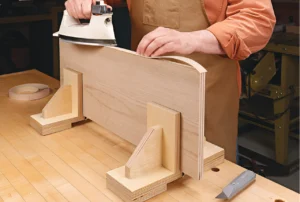
Environmental and Regulatory Trends
The growing influence of environmental regulations and the ever-evolving consumer’s preference for green products are essentially steering the adhesive industry. Here’s how 1K PUR adhesives are keeping up:
- Low-VOC Emissions: The 1K PUR adhesives typically consist of chemicals that promote no VOC emissions.
- Bio-based Formulations: Some producers employ renewable feedstock to lessen the adverse effects of PUR adhesives on the environment.
- Recycle Ability: Researchers and manufacturers are facilitating the development of recyclable PUR adhesives, mainly for use in the packaging and textile industries.
Emerging Innovations in 1K PUR Technology
- Faster Curing Technologies: Modified chemistries now allow for even faster curing ability with reduced moisture dependency.
- Heat-Activated 1K PURs: Heat-activated 1K PURs allow users to pre-apply the adhesive and then activate it with heat, offering more control in automated processes.
- Smart PUR Systems: Incorporating additives that respond to heat, light, or pressure, allowing for “intelligent” bonding behaviours.
Why 1K PUR is the Future of Adhesive Technology
1K PUR adhesives deliver a solution for modern manufacturing challenges, whether it is simplifying workflows or enabling lighter and stronger assemblies. The ability to make the bond with such substrates, to withstand environmental stress, and ease production work makes them indispensable for industries.
1K PUR gives you the flexibility of a one-part adhesive with great strength when designing high-performance furniture, putting intricate auto interiors, or even creating moisture-resistant packaging.
As industrial trends move toward sustainability and innovation, they evolve 1 K PUR adhesives into greener chemistries, faster cures, and better performance.
Why is choosing the right adhesive supplier important?
Buying glues from a factory is merely the start of an adhesive supplier choice. A reputable supplier ensures consistency of quality, technically supports your endeavours, complies with regulations, and innovates and differentiates based on your product needs. Adhesives must comply with the conditions for time and environmental factors, along with keeping track of trends in the industry and sustainability norms. A partner should serve as your ally to avoid overshipping costs while presenting a chance to implement the platform for the success of your product.
You can read more about it here.
Introducing MC 1 by Superbond
In line with this commitment to performance and partnership, Superbond has introduced its latest 1K PUR innovation – MC 1. Resolutely created to counter modern demands set for strength, versatility, and ease of use, MC 1 gives an outstanding bond on many substrates such as wood, metal, foam, and plastic with its moisture-curing polyurethane adhesive. MC 1 would see a great use in all areas of furniture, construction, and industrial manufacturing since the glue is highly durable and trustworthy to perform, all backed by Superbond’s trusted technical support.
To explore MC 1 further, from its detailed specifications to customized application advice, visit Superbond’s website. Whether you’re solving daily production challenges or building breakthrough products, Superbond offers the adhesive solutions and technical support to match your goals.


